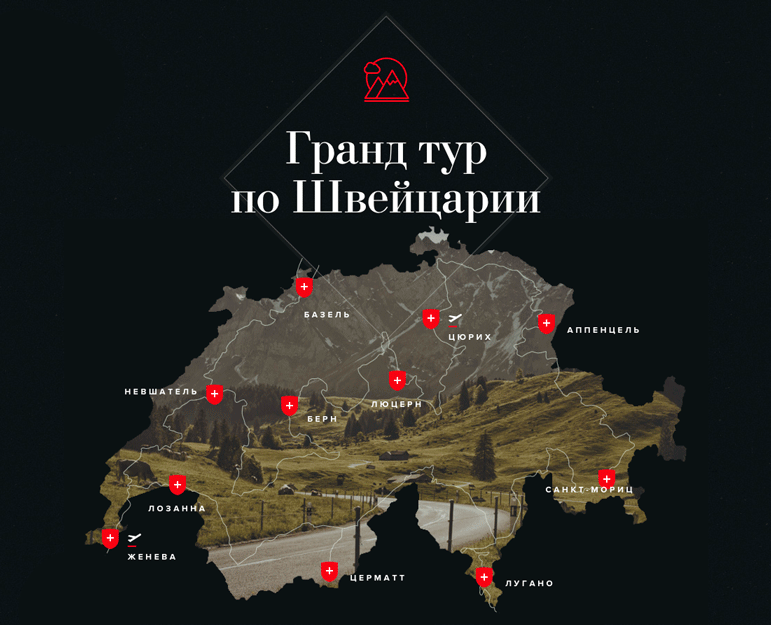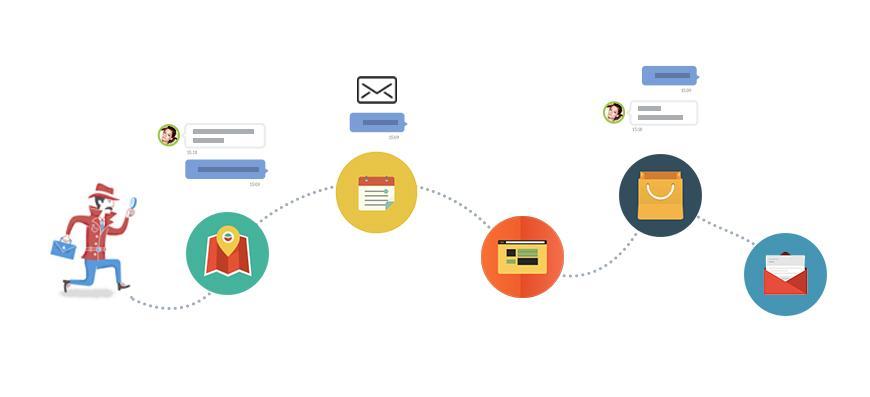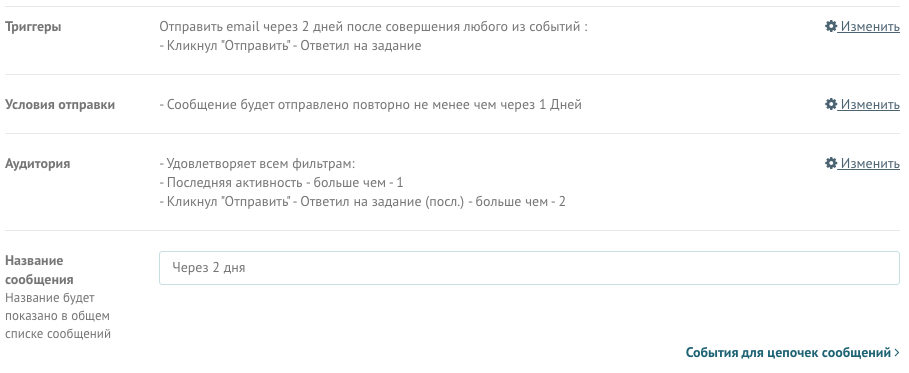How to use automation to reduce the outflow of participants in the online quest from 82% to 52%

Pavel Okishev, digital-producer of the Hungry Boys creative agency, tells how it was possible to return the participants of the online project by automating the work with users from the Carrot Quest service.
' Get lost. Get Natural 'is one of the projects of the Hungry Boys creative agency, a quest tour of Switzerland.
Users of the project 'Get lost. Get Natural 'for several weeks participated in an online quest - answered thematic questions and fought for a tour of Switzerland with a length of 1,643 kilometers with a visit to the most famous places in the country. The main objective of the quest is to acquaint users with Switzerland and create interest in traveling in this country.
')

The main problem of such projects is that it is very difficult for a long time to keep the user's attention and constantly return it to the site for the quest. This is the problem of the entire online business, starting with SaaS services and ending with online stores: there are many different distractions in people's lives. No matter how incredible the project is, part of the audience will always go away - they need to be returned and held.
Example. Why it is important to track and work on user churn
Take a conditional online business and see how the change in churn will affect the change in profits. We consider as outflow the number of leads who were interested in the product, but left at one of the stages of the purchase. Suppose that a business every month attracts the same number of users. The company does not use any additional tools for working with leads - it focuses only on the site and sales.

Please note that the calculation is rather conditional, we miss a number of points - but this almost does not affect the change in profits. If you connect the tools to engage and retain users, you can reduce the proportion gone up to 94%. There are many reasons for this that have already been discussed.
Lead attraction costs have not increased, because the company did not attract more. The specific costs of attracting a client have decreased, since the conversion to the purchase has become higher. Reducing the outflow of only 3%, the company increases profits 10 times. That is why it is necessary to focus on the work of retaining and engaging users.

Get lost project task and solution
To reduce the percentage of users who left, it is necessary to determine in time the moment when users leave and do not return, and to develop the process of their involvement. For this we needed a service with these features:
- Collects important information about each visitor of the site: who left the email, who, when and how many times visited the site, who decided the quest stage and so on.
- It can send automatic messages (email-mailings) on triggers - actions and properties of the user.
- Shows detailed statistics for all running tools.
All these features are in the service Carrot Quest . In addition, it collects key information about site visitors, fine-tunes automatic messages, it has a cool online chat and targeted pop-ups.

Screenshot from Carrot Quest service
The moment when part of the audience leaves
At this stage, we determined the proportion of users who leave in two and four days. After two weeks of use, we identified a segment of those who did not return to the service for two days.
It turned out that in the segment of those who answered the task, 82% did not come again and did not solve the next task. 82% is quite a high number. In this case, the effectiveness of the funds invested in advertising tends to go down.
What we did
We decided to launch the trigger mailings to return users who do not log in again or, after one response to the quest, do not return to solve new tasks.
The user performs daily quests of the quest and gets points. If he misses a task or does not answer constantly, then his interest will quickly disappear: he will feel that he will not have time to score points to win.
The first letter was automatically sent if the user answered the task and did not return two days after that. Here are the data for setting up the letter:

Screenshot from Carrot Quest service
But the appearance of the letter:

Screenshot from Carrot Quest service
We took only two simple steps, but this has already brought a serious effect. The letter was sent to those 82% of users who “fell off” after answering the task. In one letter, we managed to return 17.3% of those who left. Already after the first letter, the outflow decreased to 68%.
For those who did not respond to the first letter and for another two days did not enter the quest, the second letter was launched.

Screenshot from Carrot Quest service
The second letter gave even greater effect - 23.3% of those who did not come again came back. Total outflow decreased to 52%.

Screenshot from Carrot Quest service
Outflow is natural even for an interesting project: it is impossible to keep everyone’s attention and remain in the minds of users all the time. Automatic email mailings are perfect for this task: they gently remind users of the quest and make it possible to go to it directly from the letter.
The mechanics of the project required a daily return of the user to the site for the passage of new tasks. As you can see, the task was exceeded.
We promptly supported the quest participants: using the service tools, you can quickly contact a specific user and find out his questions on activities. We singled out a whole segment of users and contacted them: for example, if a person registered but did not solve a single task, he probably had difficulties.
Source: https://habr.com/ru/post/300740/
All Articles